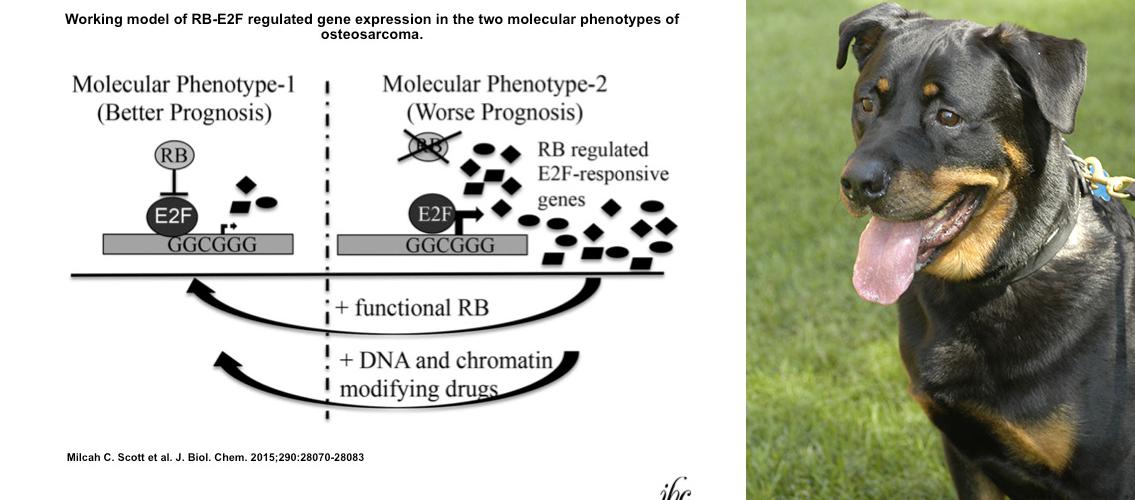
Osteosarcoma is a bone cancer that affects both humans and dogs. Researchers at the University of Minnesota, including MSI users, are studying this disease. In a recent paper that appeared in The Journal of Biological Chemistry, MSI Principal Investigators Associate Professor Subbaya Subramanian (Surgery) and Professor Jaime Modiano (Veterinary Clinical Sciences) and members of their MSI research groups were among the authors of a paper that investigated different subtypes of osteosarcoma and how they develop. It is hoped that understanding how these different tumor types develop will help in the development of new and better treatments for the disease.
This research studied features of two different molecular types of osteosarcoma, called Molecular Phenotype-1 and Molecular Phenotype-2; patients with the latter type have shorter survival times. The authors found that the regulatory pathway called RB-E2F is deregulated in Molecular Phenotype-2, and that this deregulation is responsible for the more aggressive behavior of Molecular Phenotype-2 tumors. The group used bioinformatics analyses for part of this research, in which they were assisted by MSI’s Research Informatics Solutions group, especially Dr. Ying Zhang. The paper can be found on the JBC website (MSI users are shown in bold): Milcah C. Scott, Aaron L. Sarver, Hirotaka Tomiyasu, Ingrid Cornax, Jamie Van Etten, Jyotika Varshney, M. Gerard O'Sullivan, Subbaya Subramanian, and Jaime F. Modiano. 2015. Aberrant retinoblastoma (RB)-E2F transcriptional regulation defines molecular phenotypes of osteosarcoma. The Journal of Biological Chemistry 290, (47) (NOV 20), 10.1074/jbc.M115.679696.
Both Professors Modiano and Subramanian use MSI resources in their studies of various issues related to cancer. Professor Modiano is using next-generation techniques to compare the genetics of different cancers. Professor Subramanian is investigating the molecular mechanisms of anti-cancer immune responses and malignant transformations of cancer.
Image description: [Left] Working model of RB-E2F regulated gene expression in the two molecular phenotypes of osteosarcoma. In Molecular Phenotype-1 osteosarcoma (left side), functional RB down-regulates E2F activity and restricts expression of genes associated with cell cycle progression through its interaction with the E2F DNA binding sequences. In Molecular Phenotype-2 osteosarcoma (right side), RB is absent or nonfunctional and cannot form stable RB-E2F complexes, leading to deregulation of E2F-responsive targets (indicated by black shapes in figure). Restoration of RB or treatment with DNMT and HDAC inhibitors shifts the transcriptional state of genes associated with Molecular Phenotype-2 osteosarcoma (rapid progression and worse prognosis) to a transcriptional state associated with functional RB and Molecular Phenotype-1 osteosarcoma (less rapid progression and better prognosis). [Right] Rottweiler dogs are one of the breeds that have a high incidence of bone cancer.
posted January 27, 2015